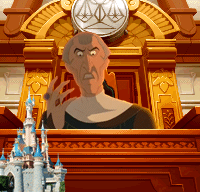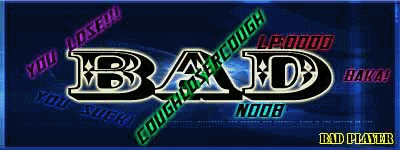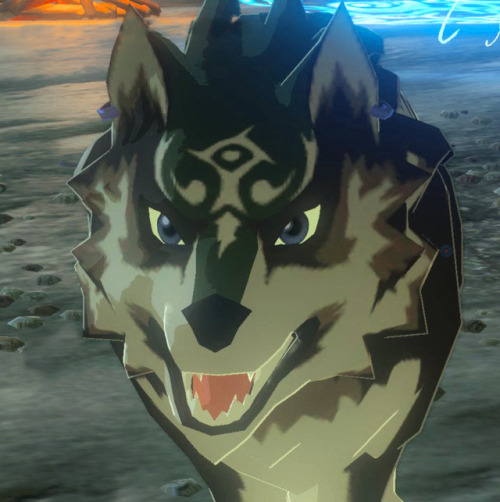If you have any additions or suggestions you would like to make, please submit them, however please don't suggest anything from any canonical game after "Justice For All" as I have not gotten that far yet and would prefer not to have to copy/paste the spoilers. Making suggestions from other cases on AAO is fine, however. Thank you!!
Introduction
This is a reference guide which collects the cross-examinations from various cases of Phoenix Wright, divides them into various "types", and distributes them in an easy-to-read and organized manner. The purpose of this guide is not to give any direction as to how to use them, but provides a quick reference as to how these types of contradictions are used in game, so that aspiring trial-makers can quickly look through them for ideas.
If you would like to learn about various ways in which these contradictions can be used to create a more challenging cross-examination, please view my other guide Making More Challenging Contradictions!
Contradiction Types
Direct Contradiction (Evidence)
These are contradictions in which the witness makes one statement, but the evidence says the exact opposite (or completely different) statement.
For example, the witness says there were 3 people, but the evidence says there were 4.
These are the most straight-forward and easy-to-notice contradictions.
These contradictions are similar to the previous, except that instead of directly contradicting the evidence, it contradicts something
that either this particular witness, or another witness, had said earlier.
Sometimes these statements are in the Court Record, but it is not unusual to expect the player to remember them.
These contradictions are the “advanced” version of the direct contradiction.
Rather than one piece of evidence directly contradicting what the witness says, there are 2 or more pieces of evidence or statements that, when combined, directly contradict the witness’s statement.
These are contradictions in which one piece of evidence implies something that would make the witness’s statement logically impossible.
These are less direct that “direct contradictions” in that the player must think of the implications of the evidence rather than compare two words or values.
For example, if a piece of evidence says that the killer’s car was out of gas, and the witness is saying that the killer drove away in the car, there is a logical contradiction, since the car requires gas to run.
A direct contradiction would be if the witness had said “there was no gas in the car.”
These are contradictions in which the witness makes a statement that contradicts a particular piece of real-world knowledge, rather than simply a specific piece of evidence.
This piece of knowledge has usually be mentioned at some earlier point in the trial.
For example, if a witness is saying that she was lying on the sand on a beach late one evening, and earlier in the case we learned that the tide at this particular beach comes in in the evening and goes out in the morning.
These are contradictions in which the witness fabricates an experience to explain a situation, and yet this experience could not have occurred based on the evidence.
These are contradictions in which the witness’s statement is physically impossible, given the circumstances.
For example, if a short woman was able to reach something on a high shelf without any help.
These are contradictions in which the statements being made contradict spacial reasoning; that is, who/what was where and when.
For example, if the witness is stating that the victim was shot in one location, while the killer was in another, yet looking at floor plans reveals that the killer would have no line-of-sight from his location.
These are contradictions in which the contradicting evidence is not found factually, but visually.
For example, when you find a contradiction in a picture, or by examining the evidence or profile’s image itself.
These are contradictions in which what the witness says is not impossible, but rather extremely unlikely given the psychological situation of the person/people involved.
For example, if the witness said something like “the victim went into the kitchen and poured herself a cup of tea.” A piece of evidence says that the victim did not go into the kitchen until after she was aware that there was a stranger in the house. Although it is not IMPOSSIBLE for the victim to pour herself a cup of tea, it is highly psychologically inconsistent, given her circumstance.
These are contradictions in which the order of events does not make sense.
They are usually easy to identify, but can be made more challenging by making the player have to piece together the order of events themselves.
An example would be if the victim left their house at 4:30, yet the witness is stating that they saw them outside at 4:15.
Detail Ambiguity
These are situations in which the witness’s statement is more specific and detailed than the evidence will allow. That is not to say that their statement couldn’t possibly be true, but rather that it cannot be determined because the evidence is too ambiguous to come to a clear conclusion. An example would be if a witness were saying that there is proof that the defendant had been to a certain store recently: the defendant owned a bowl that is sold exclusively there. However, the ownership of this bowl does not prove that the defendant himself had been there to buy it: someone else could have bought it for him, either as a favour or a gift.
These are situations in which if you consider the facts one way, it explains some facts but contradicts others.
However if you explain it another way, it explains those facts but contradicts the original ones.
These are contradictions in which the witness’s statement and the evidence do not directly contradict each other, but rather form a hole in the logic behind the event.
An example would be if the witness had stated that they were were completely full after eating a meal at a hotel restaurant, yet there is evidence that they had called room service to bring them more to eat soon afterwards.
Rather than proving the witness is lying, these discrepancies instead tend to open up the case to “why” questions. For example, “if you were full, why did you order a big meal from room service?”
These are cases in which the witness neglects to mention information that would seem reasonable and necessary to mention in their testimony.
For example, if the witness is testifying about who came in and out of a particular store while they were there, and they mention that they had seen Mr. A and Mr. C, but neglect to mention Mr. B. Meanwhile there is evidence that Mr. B had visited the store while the witness was there.
These are usually used to show that the witness is fabricating an experience that they did not have, so that their information will be taken at their word.
These are contradictions in which the witness pretends to be unaware of a fact, yet the evidence proves that they actually WERE aware of that very fact.
These are situations in which the witness knows something true about a situation, a person or a piece of evidence that even the court has not yet been made aware of.
For example, if the witness says “after the victim drank some orange juice from that glass you have there, they proceeded to...”, and yet the court (defence, prosecution, judge) had never even known the fact that there had been orange juice in the glass.
This is a good way to both reveal new information to go on, AND object to the witness by questioning how they knew the information.
Note: It is poor story-telling to use this type of situation in cases where it would convict the true killer. This undermimes the work the player has done and requires them not to fight any longer.
These are similar to the above, except for the fact that the court IS aware of the information, yet the witness should NOT be aware of that very information.
For example, if the witness mentions that there was orange juice in the glasses used as evidence, yet the court had never mentioned this information, leaving the question as to how the witness knew that information.
These are situations in which the witness is deliberately withholding important information in their testimony.
These usually have to be suggested or questioned by the player in order for the information to be revealed.
This is a special case that is not used often, in which the testimony contains no problems at all, however the testimony is completely unnecessary.
The reason it is misleading is because the witness testifies as if the testimony IS necessary.
These are situations in which the witness is telling the truth, but is not providing enough detail about their statement.
These are usually handled by pressing and requesting that the witness revise their testimony, to find the contradiction.
Explanations & Theories
These are situations in which the defence provides an explanation or a theory about a situation rather than provides a contradiction.
Usually these require some deductive reasoning and assumptions on the part of the player, and there is a piece of evidence or a profile which helps the player to provide it.
These are situations in which the player tries to place suspicion for the crime on the witness in order to pressure them to provide more information.
Usually these situations arise from the evidence presented and the statements made that it could be possible that the witness is also a suspect.
Sometimes the suggested theory is true, while other times it is a bluff to relieve the player’s client from being the sole suspect.
These are testimonies in which there is no contradiction, but rather the player must press a specific or all statements in order to continue the trial.
Usually these are testimonies in which there are no problems, but the testimony itself provides new information or evidence about the crime.
I hope that this reference guide is useful to you in your trial-making, providing with you with new ideas as to how to present your cases and testimonies in fun and interesting ways.



 trophy x 5
trophy x 5





